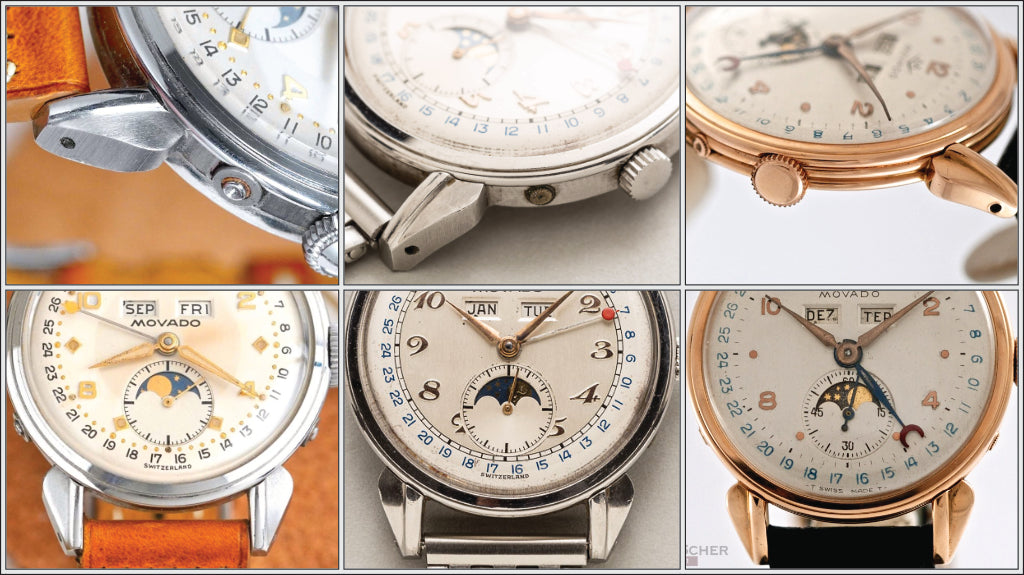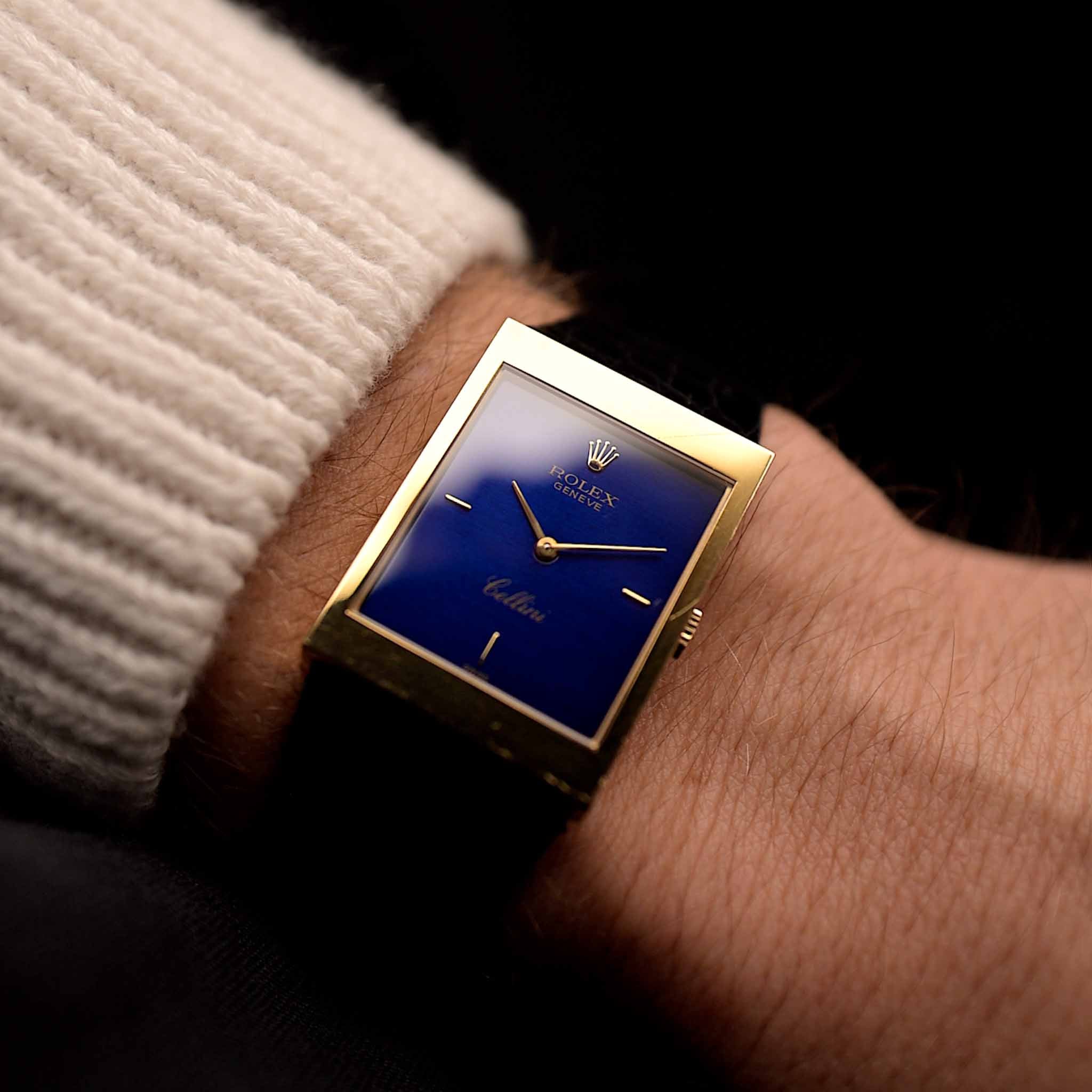Jaeger-LeCoultre didn't really sell fully assembled watches on a larger scale until... well, until when actually? What timepiece was the grand entrance to the vertically integrated watchmaking stage? Very JLC-esque this came not in light of a single watch but rather a movement family: The Duoplan! And it's truly a grand story including the first reliable miniature movement, with a waterproof case construction and the first full-package service experiences worldwide. An innovation that is relevant to this day - in spirit but also in the shape and form of the modern miniature caliber 101.
June 12, 2024
Miniaturization & Modernization - Jaeger-LeCoultre's Ingenious Duoplan Movement

Marcus Siems @siemswatches
Collector, Author, Data Analyst
Smaller watches are becoming sexy again! We see this with the recent surge of Cartier as well as bracelet watches from Piaget, Audemars Piguet, Patek Philippe and the likes. But did you know: It was almost exactly 100 years ago that this "miniaturization trend" was en vogue, too.
When wristwatches entered the stage in the early 20th Century they competed against the classic pocket watch. I don't want to make this too lengthy as I discussed size trends at another instance already (see [here]) but miniaturization is a form of technological prowess as well. And in a world dominated by pocket watches smaller wrist worn timepieces just stood out!
 (Jaeger-)LeCoultre's approach to fine miniaturized watchmaking: The Duoplan movement. I'm gonna show what makes it so special below. Photo from Goldammer.
(Jaeger-)LeCoultre's approach to fine miniaturized watchmaking: The Duoplan movement. I'm gonna show what makes it so special below. Photo from Goldammer.
But decreasing size in watches - be it thinner or smaller movements - always comes at the cost of reliability. Think about it this way: When a movement gets smaller it still needs to fit all its parts. Every piece, every gear gets miniaturized, which in turn also means that tolerances would need to get smaller. Hence, the smaller the watch the easier timekeeping is perturbed by motion, climate or other external factors and you can't have it all. You gotta decide to either have a durable, sturdy and reliable or a smaller movement.
That is unless you ask Jaeger-LeCoultre on what they think about the matter. Because in 1925[1-2] the watchmaker's watchmaker introduced an ingenious innovation that would circumvent many of these issues - The Jaeger-LeCoultre Duoplan movement family*. And please believe me when I tell you that the history of these pieces is packed with highlights - from a horological and marketing perspective...
 1930s brochure featuring the Jaeger-LeCoultre Duoplan movement and its specifications (in French, translation below). Brochure Courtesy of HIFI Archiv.
1930s brochure featuring the Jaeger-LeCoultre Duoplan movement and its specifications (in French, translation below). Brochure Courtesy of HIFI Archiv.
The movement of these pieces was - contrary to classic movement layouts - arranged along two planes: The lower level contained the barrel and most of the gear train and the upper level the escapement. With this brilliant invention Jaeger-LeCoultre effectively doubled the space on their movement and introduced reliability into miniature watchmaking!
 1930s Jaeger-LeCoultre advertorial featuring several pieces with Duoplan movements. Advertorial Courtesy of HIFI Archiv.
1930s Jaeger-LeCoultre advertorial featuring several pieces with Duoplan movements. Advertorial Courtesy of HIFI Archiv.
1) Special Features
Jaeger-LeCoultre was throughout the first half of the last Century very involved with manufacturing movements and ebauches but less so in actually assemble and sell their own timepieces. However, it seems that the Duoplan was such a milestone that JLC not only introduced several(!) references but combined them with a manifold of unconditional guarantees and assurances. Jacques-David LeCoultre together with his partner Cesar de Trey (Specialites Horlogeres S.A.) were the driving forces behind this marketing stunt[1].
The catalogues and brochures of the 1930s and 40s read as follows:
- "Built on two superimposed planes, the DUOPLAN movement is both very precise and extremely robust because all the parts that make it up are those of a large movement" -
This is something we already know and kinda is the entire thing of inventing it in the first place.
 How cool is this? Even the logo "Duoplan" highlights the two-level organization of the movement! Photo from Goldammer.
How cool is this? Even the logo "Duoplan" highlights the two-level organization of the movement! Photo from Goldammer.
Yes, you read correctly. Jaeger-LeCoultre labels these pieces as waterproof! At a time when Rolex just conceived the Oyster and Omega lowered their Marine to Lake Geneva! And JLC managed to get to this (internal) standard by applying lead discs and cork into the winding system[1].
 Due to the application of lead discs and cork Jaeger-LeCoultre would actually guarantee the dust- and even waterproofness of their watches! Photo from Goldammer.
Due to the application of lead discs and cork Jaeger-LeCoultre would actually guarantee the dust- and even waterproofness of their watches! Photo from Goldammer.
- "For a period of two years after its purchase, the DUOPLAN watch is repaired free of charge by simply exchanging the movement"** -
This bit is a pro and a con from a modern vintage-lover's standpoint. Jaeger-LeCoultre would repair your watch at their own cost (for two years, even when You broke it!) but would do so by exchanging the movement completely. Customers were even granted with a list of international agents offering this service.
- "Furthermore, it is insured with Lloyds against loss, theft and irreparable accidents. The DUOPLAN is the only watch throughout the world, at Jaeger LeCoultre dealers, to benefit from such privileges" -
And lastly, all watches were actually insured by Lloyd's. All in all, with this approach Jaeger-LeCoultre basically revolutionized the customer experience in the 1920s!
 1930s Jaeger-LeCoultre advertorial reading "A Jaeger-LeCoultre watch serves you in all circumstances" - The complete service experience, the full package for every customer (and retailer). Advertorial Courtesy of HIFI Archiv.
1930s Jaeger-LeCoultre advertorial reading "A Jaeger-LeCoultre watch serves you in all circumstances" - The complete service experience, the full package for every customer (and retailer). Advertorial Courtesy of HIFI Archiv.
On top of all these novelties, the Duoplan watches further feature early sapphire crystals and cases made from actual stainless steel (typically no staybrite or chromed materials) and were "high beat" for the time with up to 21,600Vph (3Hz) escapements. Inside, outside and customer experience ... with all this JLC took watchmaking to the next level!
2) Different Evolutions
The Duoplan movement family consists of a total of four different sizes and their development started likely already in 1914/15[1]. The original minds behind the first Duoplan (cal. 104) was Parisian watchmaker Henri Rodanet under the supervision of Edmond Jaeger.
Potentially, these movements were originally designed for Cartier but the exclusivity agreement of this relationship ended in 1921/22[3]. And with the help of Jean-Pierre de Trey (son of Cesar de Trey) and the retailers Eberhard in Milan and Guebelin in Lucerne the first references were originally launched probably in 1934[1] - first with the "Jewellery" line and later with collections called "Etrier" (with Hermes), "Tuile", "Coulissante", & "Driver". And beating at the heart of it all was one out of four different Duoplan movements.
 A modern Jaeger-LeCoultre cal. 101 - a miniature movement that is produced to this day at the manufacture in Le Sentier. Photo Courtesy of Jaeger-LeCoultre.
A modern Jaeger-LeCoultre cal. 101 - a miniature movement that is produced to this day at the manufacture in Le Sentier. Photo Courtesy of Jaeger-LeCoultre.
The four different types are measuring 6''', 7''', 9''' and 11''' ligne at the longer side of the rectangular movement. The respective movements are known as cal. 101 (6 BF), cal. 104 (7 BF), cal. 403 (9 BF), & cal. 409 (11 BF).
| Caliber | Dimensions (LxWxH) | Rate | Years | Production |
|---|---|---|---|---|
| 101 |
14 x 4.8 x 3.4 mm | 21,600 Vph | 1929-today | / |
| 104 | 16 x 5.8 x 3.4 mm | 20,222 Vph | 1925-59 | 1,608 |
| 403 | 20 x 8.5 x 3.73 mm | 18,000 / 21,000 Vph | 1927-66 | 11,109 |
| 409 | 23 x 10.5 x 4 mm | 18,000 / 21,000 Vph | 1929-62 | 9,461 |
Table 1. Overview of Jaeger-LeCoultre Duoplan movements[1].
3) Conclusion
I told this is gonna be a wild ride, and a story much bigger than the movements highlighted here. What Jaeger-LeCoultre created goes beyond the technological spearhead their Duoplan calibers formed!
If we look at the entire backstory "Le Grande Maison" created the first reliable miniature movement, with a waterproof case construction and (one of) the first full-package service experiences worldwide. And all of this for a brand that until that point rarely shone with fully assembled timepieces but rather ebauche movements. What an entry did Jaeger-LeCoultre make to the grand stage of "vertically integrated" (pun intended) watchmaking!? So many innovations that are relevant to this day - in spirit but also in the shape and form of the modern miniature caliber 101. Bravo!
 Not only stunning on paper or the drawing board but also the wrist. An additional charismatic feature is the hidden crown as it makes these pieces ultimately symmetric! Photo from Goldammer.
Not only stunning on paper or the drawing board but also the wrist. An additional charismatic feature is the hidden crown as it makes these pieces ultimately symmetric! Photo from Goldammer.
* As revolutionary as the Jaeger-LeCoultre's development of the Duoplan was, we must keep in mind that Movado already introduced their Polyplan movements in 1912. These addressed the distinct issue of wearability but were technologically on a very similar path.
** Well, the complete exchange of the movement was also necessary as it was simply too expensive to repair the tiny, often handmade, parts of the movement. (Credit to Herman @Hurmen)
References
[1] The Collectibles; Matthieu Sauret, Jaeger-LeCoultre.
[2] Ladies Duoplan; Blommen Watch Report [Link]
[3] Cartier Brand Portrait: A Tale of Watchmaking in the Cartier Empire; Catherine Bishop, SwissWatches [Link]
All rights on text and graphics reserved to the Author.




























Leave a comment